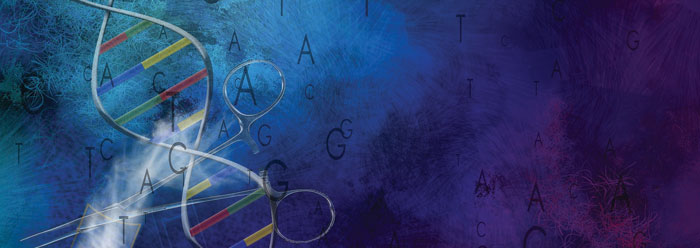One of the leading arguments for human evolution from a shared common ancestor with apes is the "chromosome 2 fusion model." This hypothetical model proposes that the end-to-end fusion of two small ape-like chromosomes resulted in the human chromosome 2, which supposedly explains the difference in chromosome numbers between humans and great apes.1 A graphical depiction of the fusion model showing the orientation of telomere and centromere sequence was published in a previous issue of Acts & Facts.2
New research is now seriously undermining the validity of the fusion model and human evolution in general. This author and Professor Dr. Jerry Bergman of Northwest State College, Ohio, analyzed the scientific literature and available DNA sequence and made several exciting findings, summarized below.
1. The purported fusion site on human chromosome 2 is actually located in a different position on chromosome 2 than predicted by the fusion model. The hypothetical fusion site is also in an area with suppressed recombination (meaning that the fusion sequence should be very pristine) and should exhibit very little degeneracy, compared to standard telomere sequence. Telomere sequences in humans normally consist of thousands of repeats of the standard 6-base sequence "TTAGGG." We found that the hypothetical fusion region is completely degenerate and vaguely represents anything close to intact and fused telomeres. An earlier 2002 research report by molecular evolutionists also made note of this extreme sequence degeneracy and the obvious discrepancies it presented for the evolutionary model.3
2. At the purported fusion site, there is a very small number of intact telomere sequences and very few of them are in tandem or in the proper reading frame. The small number of randomly interspersed telomere sequences, both forward ("TTAGGG") and reverse ("CCCTAA"), that populate both sides of the purported fusion site are not indicative of what should be found if an end-to-end chromosomal fusion actually took place.
3. The 798-base core sequence surrounding the fusion site is not unique to the purported fusion site, but found throughout the human genome with similar sequences (80 percent or greater identity) located on nearly every chromosome. This indicates that the fusion site is some type of commonly occurring fragment of DNA in the human genome.
4. No positionally corresponding regions of sequence similarity in the chimpanzee genome for the purported human fusion site were found. The 798-base core fusion-site sequence did not align (match) to any corresponding regions in the chimp genome. In fact, the sequence was considerably less common and more dissimilar in chimpanzees.
5. Queries against the chimpanzee genome with fragments of human DNA sequence (alphoid sequences) found at the purported cryptic centromere site on human chromosome 2 did not produce any significant hits using two different DNA matching algorithms (BLAT and BLASTN).
6. The purported cryptic centromere on human chromosome 2, like the fusion site, is in a very different location to that predicted by a fusion event.
7. The DNA alphoid sequences at the putative cryptic centromere site are very diverse and form three separate sub-groups. They also do not closely match known functional human centromeric alphoid elements. Alphoid sequences are commonly found throughout the human genome, and some types of alphoid sequences are not associated with centromeres. This strongly diminishes their probability of being part of an ancient de-activated (cryptic) centromere.
This human chromosome 2 research will be described in more detail in an upcoming Journal of Creation issue. Despite evolutionists’ insistence that the chromosome 2 fusion model supports a human-chimp common ancestor, the so-called supporting data are not present. All evidence points to man and ape as unique and separate creations.
References
- Yunis, J. J. and O. Prakash. 1982. The Origin of Man: A Chromosomal Pictorial Legacy. Science. 215 (4539): 1525-1530.
- Tomkins, J. 2011. New Human-Chimp Chromosome 2 Data Challenge Common Ancestry Claims. Acts & Facts. 40 (5): 6.
- Fan, Y. et al. 2002. Genomic Structure and Evolution of the Ancestral Chromosome Fusion Site in 2q13-2q14.1 and Paralogous Regions on Other Human Chromosomes. Genome Research. 12 (11): 1651-1662.
* Dr. Tomkins is a Research Associate and received his Ph.D. in Genetics from Clemson University.
Cite this article: Tomkins, J. 2011. New Research Undermines Key Argument for Human Evolution. Acts & Facts. 40 (6): 6.



















